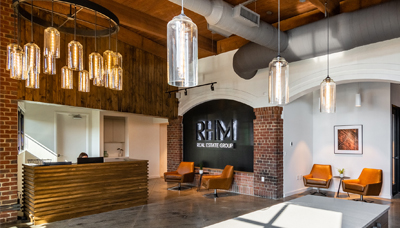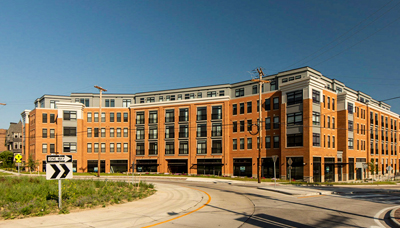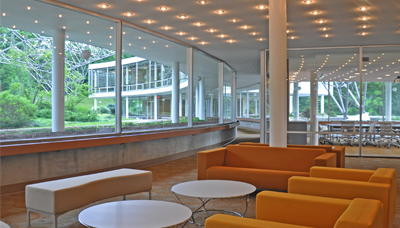“Best Renovation”
ASM International HQ, Ohio, by the Chesler Group
Written by Ellie Statham | Photography by Jeff Goldberg
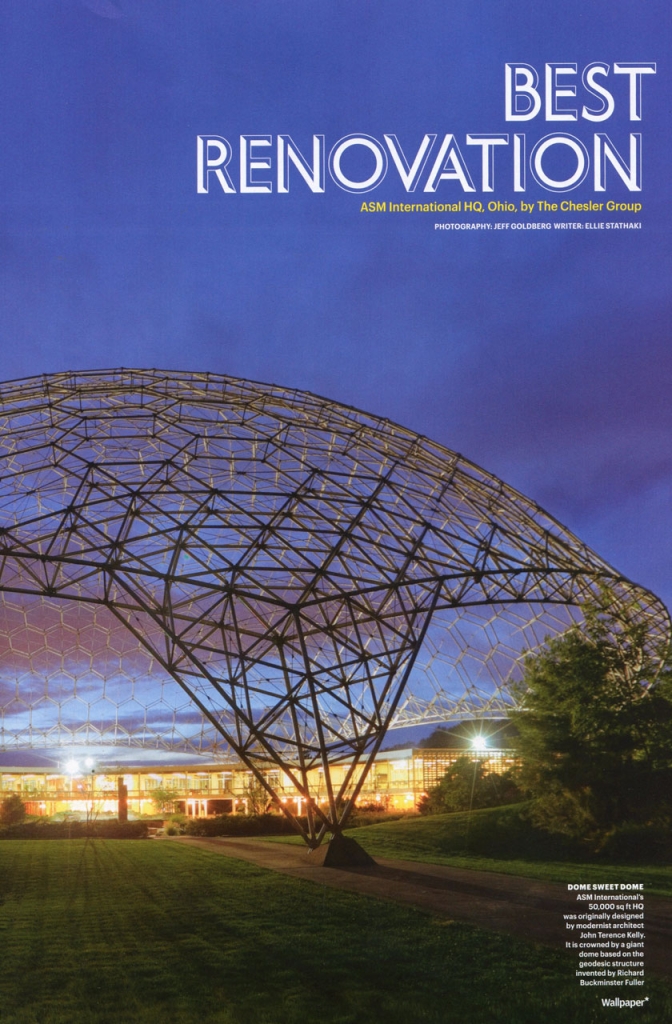 From its conception half a year ago, this unusual HQ was meant to unite the very best of the time’s architecture, technology, and materials. Designed for ASM (formerly known as American Society for Metals) as a celebration of man’s mastery of materials, the building sits within the 45-acre Materials Park estate in the rural Russell Township, some 25 miles east of Cleveland, Ohio. Its recent renovation by leading conservation specialist The Chesler Group not only saved it from the uncertainty of a possible sale, but also breathed new life into a landmark building, highlighting the increasing need — and expanding market — for the
From its conception half a year ago, this unusual HQ was meant to unite the very best of the time’s architecture, technology, and materials. Designed for ASM (formerly known as American Society for Metals) as a celebration of man’s mastery of materials, the building sits within the 45-acre Materials Park estate in the rural Russell Township, some 25 miles east of Cleveland, Ohio. Its recent renovation by leading conservation specialist The Chesler Group not only saved it from the uncertainty of a possible sale, but also breathed new life into a landmark building, highlighting the increasing need — and expanding market — for the
preservation of modernist architecture.
The building’s original existence and futuristic shape was the product of three minds. ASM International’s late managing director William Hunt donated the 100 acres needed for the park to the company. Prominent Cleveland modernist architect John Terence Kelly designed the main, semi-circular HQ building that includes office space, laboratories and a 400ft-diamter garden piazza. And designer and theorist Richard Buckminster Fuller was the inventor of the iconic dome that crowns the complex.
Spanning 250ft in diameter and about 100ft in this height, this symbolic aluminium structure is the largest openwork dome in the the world. Composed, in fact, of two domes, one within the other, placed 30 apart to secure maximum stability, it is made of more than 65,000 parts, all anchored to the ground by five pylons. The main tube elements are joined in a hexagonal open latticework, following Fuller’s original geodesic dome design.
The semi-circular building beneath it sits on stilts, lifted off the landscaped concrete garden piazza that follows the main volume’s curve and helps it to ease into the organic shapes. Further office space is nestled under this concrete terrace. Held together by reinforced steel, the building has interiors designed to include a wide range of different metals, from copper to stainless steel, brass and aluminium. It’s main body is designed in modernist spirit, with open-plan spaces, while external stainless steel sun-shields on the western side control the sunlight.
When the structure was inaugurated in 1959, Kelly put the emphasis on the client, a company that has played a key role in the history of material science for nearly a century. “This challenge is in terms of pure design. In itself, this fact is insignificant. But let’s look at our client. In ASM we have one who not only encourages creative design, but who has shown patience while one evolves the design to a state of working perfection,” he said at the press announcement for the building’s inauguration. Kelly’s later award, the 1968 Cleveland Arts Prize for Architecture proved that the boldness of this particular design was no exception. However, with a few of his award-winning houses — such as the Porter House in East Liverpool, Ohio (1953) and McDonald House in Gulf Farms, Elryia (1962) — it is considered among his greatest works.
Fast-forward five decades and the ASM International HQ is back in the spotlight. And to think that the building wasn’t even scheduled for renovation. “It all started when I called the managing director, Stan Theobald, dead cold, and asked for a meeting. He reluctantly agreed,” recalls The Chester Group’s president Michael Chester. During the meeting, the architect explained how they could restore the historic building and obstain both federal and state historic tax credits, “which would yield millions to offset the costs. ASM International was at the time considering selling the building, but Chesler’s vision and determination won them over. Stan Theobald had working in the building for 30 years and had watched it decline. I could tell he loved the building but was completely overwhelmed as to how restore it,” says Chesler. “That was when I knew we had the makings of a great partnership.”
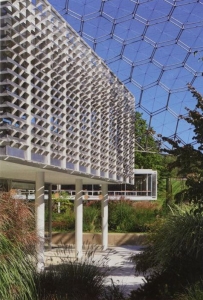 From conception and site work through to final occupancy, The Chesler Group handled everything, in line with the Ohio-based firm’s standard approach. What is more atypical is that while the buildings the firm works with are usually already listed, this one was barely 50 years old when discussions began (the minimum age for a building to be considered for listing). The result was a listing triumph for Chesler — at the end of 2009 it part of the US’s National Register of Historic places – a first for such a ‘young’ building.
From conception and site work through to final occupancy, The Chesler Group handled everything, in line with the Ohio-based firm’s standard approach. What is more atypical is that while the buildings the firm works with are usually already listed, this one was barely 50 years old when discussions began (the minimum age for a building to be considered for listing). The result was a listing triumph for Chesler — at the end of 2009 it part of the US’s National Register of Historic places – a first for such a ‘young’ building.
The demanding renovation works included cutting off and removing the steel solar panels in order to clean them up; caring for over 200 pieces of quarter-inch plate glass that needed caulking and stabilising (which, challengingly, the team was not allowed to do off site); and installing new custom boilers and computer controlled pumps and drives to adjust hot-water flow, which also added the reduction of overall operating costs by about 50 percent. “But by far the most challenging aspect was the renovation of the original vegetative roof deck. It was built before the technology existed to keep water out, so it the leaked the year after its construction. There were multiple failed attempts seal it,”says Chesler. “We weren’t allowed to replace it so we had to marry the new concrete wall with the existing historic fabric. On top of that, we had work during night to blast off the coal tar pitch, as it was the only time it wasn’t tacky.”
With its recent listing, the buillding’s future and legacy is now secure. And as the first modern historic building of its kind to benefit from the government’s tax credit programmes, it’s clear the project has hit the right notes. “It took us just 14 months.” says Chesler. “It was a sprint so that ASM could get back in its space quickly. Yet, we were exactly on time and a bit under budget. Also, it was the first project of its kind for us. These buildings are the future of historic renovation in the USA. We are anxious to do more.

